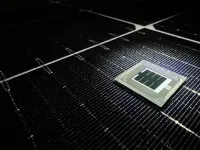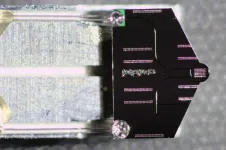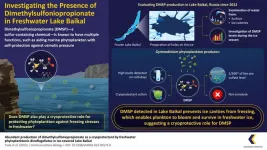(Press-News.org) Thuwal, Saudi Arabia, Month Day, Year – Scientists at King Abdullah University of Science and Technology (KAUST) have unveiled a roadmap for bringing perovskite/silicon tandem solar cells to market, paving the way for a future powered by abundant, inexpensive clean energy in Saudi Arabia and the world.
The authors of the article, published in esteemed journal Science, include Prof. Stefaan De Wolf and his research team at the KAUST Solar Center.
The team is working on improving solar efficiency to meet Saudi Arabia’ solar targets.
Perovskite/silicon tandem technology combines the strengths of two materials – perovskite's efficient light absorption and silicon's long-term stability – to achieve record-breaking efficiency. In 2023, the De Wolf laboratory reported two world records for power conversion efficiency, with five achieved globally in the same year, showing rapid progress in perovskite/silicon tandem technology.
However, translating laboratory success to real-world application requires careful consideration. The paper outlines key challenges and proposes solutions for commercialization.
Among these is the consideration of real-world conditions, like variable temperature and sunlight. The authors suggest geographical testing – akin to personalized medicine for solar cells – to optimize performance for specific locations.
Another consideration is accelerated stability testing. The deployed solar cells must have a lifespan that lasts decades. Accordingly, tests that compress years of wear and tear into a much shorter timeframe are necessary. Understanding degradation rates is crucial for setting competitive prices and warranties.
Finally, current manufacturing processes involve high material costs and potentially dangerous chemicals that may require costly safety precautions. The paper proposes paradigms for both monolithic and mechanically stacked tandem production lines to identify cost-reduction opportunities.
"The market for perovskite/silicon tandems is expected to exceed $10 billion within a decade," said Professor Stefaan De Wolf. "KAUST is at the forefront of this revolution, laying the groundwork for affordable, accessible clean energy for all."
Erkan Aydin, another author of the study is expected to leave the De Wolf lab in 2024 to start his own in Europe.
The breakthrough research at KAUST on perovskite/silicon tandem photovoltaics exemplifies the University's commitment to developing green technologies that advance carbon-free policies and secure a sustainable future.
About King Abdullah University of Science and Technology (KAUST)
Established in 2009, KAUST is a graduate research university devoted to finding solutions for some of the world’s most pressing scientific and technological challenges in the areas of food and health, water, energy, environment, and the digital domain. The University brings together the best minds and ideas from around the world with the goal of
END
KAUST scientists unveil blueprint for affordable solar cells to power Saudi Arabia and beyond
2024-01-11
ELSE PRESS RELEASES FROM THIS DATE:
Quest for personalized medicine hits a snag
2024-01-11
New Haven, Conn. — The quest for personalized medicine, a medical approach in which practitioners use a patient’s unique genetic profile to tailor individual treatment, has emerged as a critical goal in the health care sector. But a new Yale-led study shows that the mathematical models currently available to predict treatments have limited effectiveness.
In an analysis of clinical trials for multiple schizophrenia treatments, the researchers found that the mathematical algorithms were able to predict patient outcomes within the specific ...
Bridging light and electrons
2024-01-11
When light goes through a material, it often behaves in unpredictable ways. This phenomenon is the subject of an entire field of study called “nonlinear optics”, which is now integral to technological and scientific advances from laser development and optical frequency metrology, to gravitational wave astronomy and quantum information science.
In addition, recent years have seen nonlinear optics applied in optical signal processing, telecommunications, sensing, spectroscopy, light detection and ranging. All these applications involve the miniaturization of devices ...
Climate change spells disaster for termite-loving numbats
2024-01-11
Australia is known for its wonderous and unique wildlife. But, just like the rest of the world, Australia is expected to get even hotter because of climate change. This could spell disaster for many of the marsupials that call the drier regions of the country home as it may get too hot for them to handle. To make things even more difficult, many of these marsupials are endangered thanks to habitat loss and introduced species such as domestic cats and red foxes. Therefore, finding a way to study these animals without disturbing them is critical to ensure their survival. This realisation led Christine Cooper (Curtin University, ...
ACIP releases 2024 Adult Immunization Schedule featuring four new vaccines
2024-01-11
Embargoed for release until 1:00 p.m. ET on Thursday 11 January 2024
Annals of Internal Medicine Tip Sheet
@Annalsofim
Below please find a summary for new article that will be published in of Annals of Internal Medicine. The summary is not intended to substitute for the full articles as a source of information. This information is under strict embargo and by taking it into possession, media representatives are committing to the terms of the embargo not only on their own behalf, but also on behalf of the organization they represent.
-------------------------------------------------
ACIP ...
Thermal vision shows endangered numbats feel the heat of warming climate
2024-01-11
Curtin University research using thermal imaging of numbats in Western Australia has found that during hot weather the endangered animals are limited to as little as ten minutes of activity in the sun before they overheat to a body temperature of greater than 40°C.
Lead author Dr Christine Cooper, from Curtin’s School of Molecular and Life Sciences, said despite using techniques such as raising or flattening their fur to regulate body temperature, numbats were prone to overheating, which was an important consideration for future conservation efforts, particularly given our warming climate.
“Active only during ...
A call for improved CDC communication on adult immunization
2024-01-11
In an editorial in the Annals of Internal Medicine, CUNY SPH Distinguished Lecturer Scott Ratzan, Senior Scholar Ken Rabin, and colleagues call for the Centers for Disease Control and Prevention (CDC) to “raise its persuasive communications game” on adult immunization to clinicians and the public. They argue that disseminating scientific information alone will not suffice in the present environment of disinformation and low trust in public health.
The editorial is in response to the CDC’s ...
JMIR Biomedical Engineering has passed the Scientific Quality Review by NLM for PMC
2024-01-11
JMIR Publications is pleased to announce that JMIR Biomedical Engineering has passed the Scientific Quality Review by the US National Library of Medicine (NLM) for PubMed Central (PMC). This decision reflects the scientific and editorial quality of the journal. All articles published from 2021 onward will be found on PMC and PubMed after their technical evaluation.
Launched in 2016, JMIR Biomedical Engineering is a sister journal of Journal of Medical Internet Research (the leading open-access journal in health informatics), focused on the application of engineering principles, ...
Close encounters of the supermassive black hole kind: tidal disruption events and what they can reveal about black holes and stars in distant galaxies
2024-01-11
At the center of most large galaxies lives a supermassive black hole (SMBH). The Milky Way has Sagittarius A*, a mostly dormant SMBH whose mass is around 4.3 million times that of the sun. But if you look deeper into the universe, there are vastly larger SMBHs with masses that can reach up to tens of billions of times the mass of our sun.
Black holes grow in mass by gravitationally consuming objects in their near vicinity, including stars. It’s a catastrophic and destructive end for stars unlucky enough to be swallowed by SMBHs, but fortunate for scientists who now have an opportunity to probe otherwise-dormant centers of galaxies.
TDEs Light the Way
As the name ...
Study reveals new connection between impaired autophagy and heart failure
2024-01-11
A new study sheds light on how autophagy, the body’s process for removing damaged cell parts, when impaired, can play a role in causing heart failure. The research team led by Dr. E. Dale Abel, chair of the Department of Medicine at UCLA and Dr. Quanjiang Zhang, adjunct assistant professor of medicine at UCLA, identified a signaling pathway that links autophagy to the control of cellular levels of a key coenzyme known as NAD+, which is found in all living cells and is central to how our metabolism works. Researchers say these findings may have implications ...
Exploring dimethylsulfoniopropionate production by freshwater phytoplankton in lake Baikal
2024-01-11
Phytoplankton or microalgae found in the ocean are often known to produce a sulfur-containing chemical called dimethylsulfoniopropionate (DMSP). This organic molecule breaks down to release a strong but sweet-smelling gas called dimethyl sulfide (DMS), which plays a major role in the formation of cloud condensation nuclei and is also associated with the smell of the sea. More importantly, DMSP acts as an osmolyte and thus protects the phytoplankton against the osmotic pressure created by saline water.
Scientists have, however, ...





